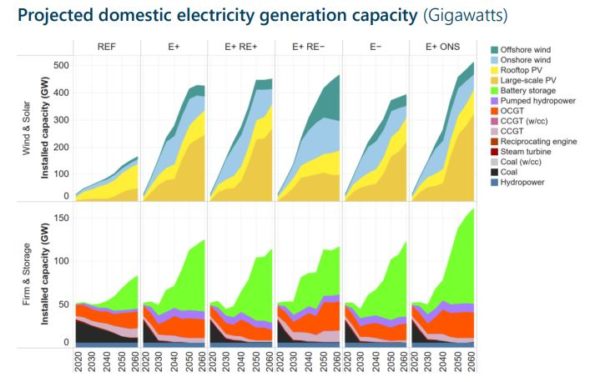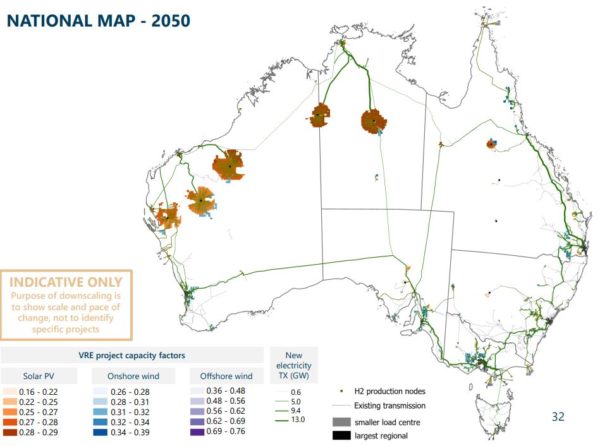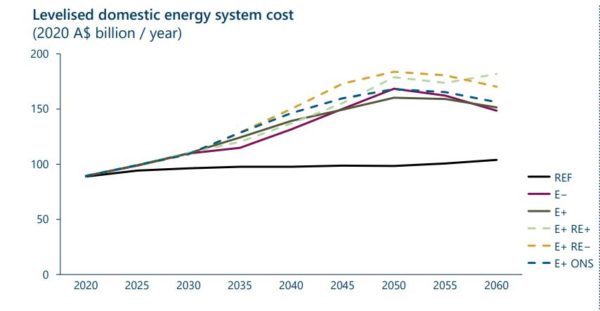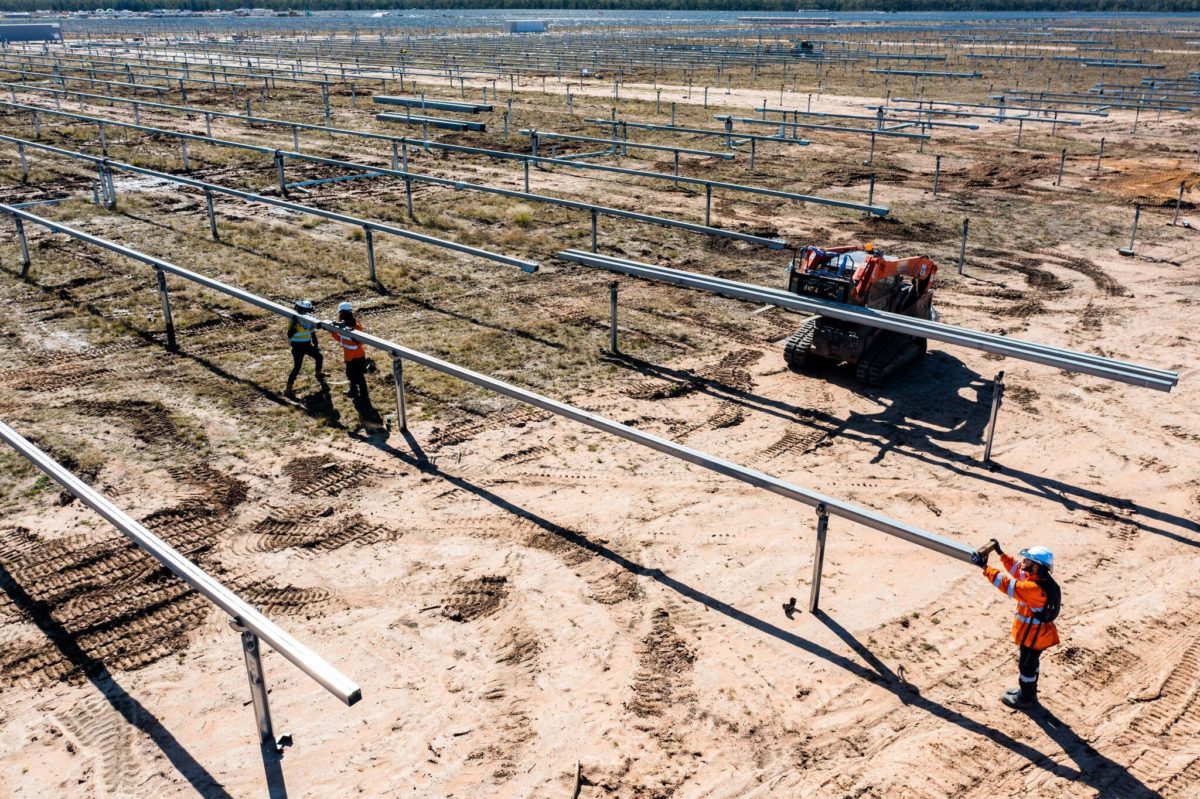A multi-year study conducted by the Net Zero Australia (NZA) project has found the approval, financing and construction of renewable energy infrastructure will need to be rolled out at unprecedented speed and scale if the country is to deliver on the vision of a net-zero carbon economy.
With the federal government targeting 82% renewables across the energy grid and a 43% cut in emissions by 2030, the NZA project has outlined the scope, complexity and cost of the challenge that Australia faces as it seeks to achieve its climate and renewable energy targets.
A partnership led by representatives from the University of Melbourne, The University of Queensland, Princeton University in the United States and management consultancy Nous Group, the NZA project has analysed the pathways by which Australia can achieve net zero in both domestic and export emissions.
Simon Smart, project director from the University of Queensland, said the necessary transition would be both an immense challenge but also a once-in-a-generation nation building opportunity.
“This interim modelling shows that the scale and pace of what we need to build is unprecedented,” he said. “If we keep building the way we have done, it is likely we will go too slowly towards a net zero future – we need to think differently about the required infrastructure and technology.”
Interim findings from the multi-year study published on Thursday indicate large-scale and rooftop solar PV and wind will produce most or all domestic energy by 2050 and green hydrogen from solar is projected to be the largest clean energy export. The findings also reveal the required rate at which renewable energy capacity is to be added will be much higher than historical levels.

Richard Bolt, principal at Nous Group, said as fast and large as the transition will need to be, “it is practically achievable”.
“All our scenarios suggest that renewables will be the dominant energy source. An immense amount of new infrastructure will be needed, and must be built at a breath-taking speed,” he wrote in the Australian Financial Review. “Our use of land and sea will undergo extensive change. We will also have to convert to increasingly electric and efficient vehicles, appliances and industries at an unprecedented speed and scale.”
The modelling analysed six possible net-zero scenarios and consequences of reducing emissions by using renewables, carbon capture utilisation and storage, and replacing technologies that use fossil fuels with ones that use electricity, such as electric vehicles. Most place no limit on the rate at which renewables can be built but only one scenario (E+RE+) allows only renewables by 2050. The other scenarios anticipate natural gas and oil products will play a role with carbon capture, utilisation and storage (CCUS) together with renewable energy technologies.

All of the scenarios predict progressive adoption of renewables. The E+ scenario, which models nearly full electrification of transport and buildings by 2050, no limit on renewables rollout, and a lower cap on CCUS, anticipates that by 2030 Australia will require about three times the total generation capacity of today’s national electricity market (NEM). The modelling suggests that by the end of the decade there will be 98 GW of solar PV capacity spread across 135 projects, along with 49 GW of onshore wind (79 projects) and 500 MW of offshore wind (1 project).
By 2040, this will increase to 654 GW of solar PV (782 projects), 130 GW of onshore wind (187 projects) and 41 GW of offshore wind (35 projects). In 2050, solar PV capacity will reach 1.9 TW across 2,242 projects. Onshore wind will total 132 GW (194 projects) while offshore wind will increase to 42 GW (36 projects). Electricity generation is about 40 times the current capacity of the NEM.
The total annual domestic energy system cost is expected to increase from just under $90 billion a year today to an estimated $150 billion a year by the late 2030s and stay at that level through the 2050s.

The modelling indicates between 1 to 1.3 million new workers will be needed to facilitate the roll out of renewables, with much of the activity to take place in Australia’s traditional resources regions.
“Our findings show there’s no two ways about it, to meet net zero by 2050, Australia must transform,” NZA steering committee chair and former Australian chief scientist Robin Batterham said. “Major and long-term investment is required in new renewable generation, electricity transmission, hydrogen supply chains, and more.”
Batterham also said there is major scope to build a new clean export industry as coal and gas exports decline with green hydrogen from solar projected to be the largest clean energy export. The report suggests the cost to export clean energy may rise, climbing from about $100 billion a year to an estimated $600 billion, but should be competitive in a decarbonising global economy.
“Clean energy exports are a major opportunity,” he said. “Global demand for clean energy is currently uncertain, but Australian exports should be competitive. We stand to gain large export revenues and a million new Australian jobs, if exported energy stays around today’s level.”
The NZA project said the next phase of work will further explore the impacts on land and sea usage, variations of the scenarios, and the benefits and drawbacks of actions that may be taken by governments, companies and communities to mobilise investment and public support. The final report is due to be released in 2023.
This content is protected by copyright and may not be reused. If you want to cooperate with us and would like to reuse some of our content, please contact: editors@pv-magazine.com.









The article does not address storage required such as size of and positioning of batteries. Have they addressed this issue? It is a complex and interesting subject.
On the issue of carbon capture, I think much of the current political thinking has to be exposed. I have experience in subsurface reservoirs and am concerned that our current aquifers will be slowly converted to soda fountains without appropriate management. The current reservoir engineers working for the Victorian Government don’t make the grade.